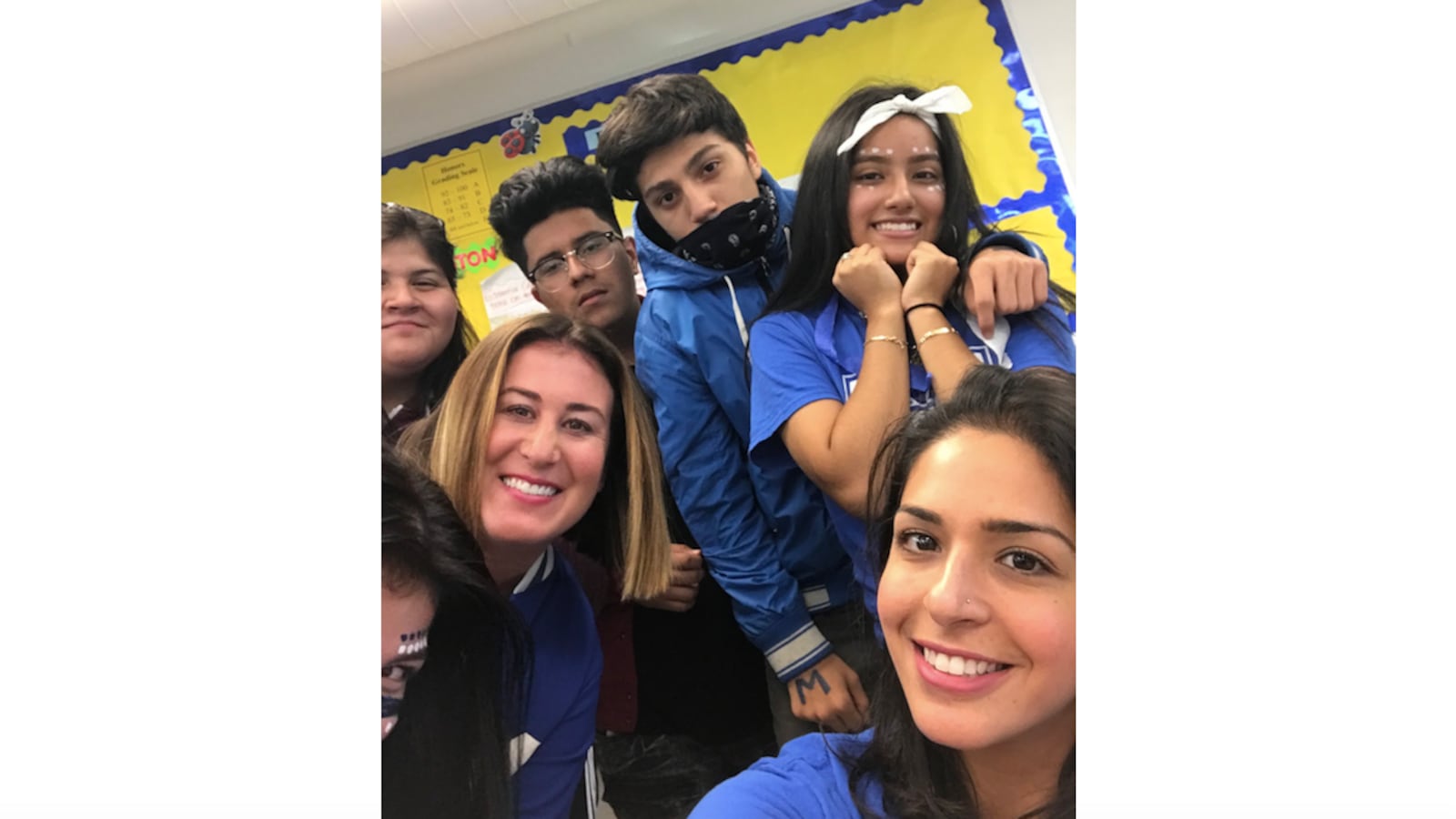Here, in a feature we call How I Teach, we ask educators who’ve been recognized for their work how they approach their jobs. You can see other pieces in the series here.
Hyam Elsaharty thinks Chicago is on the cutting edge of social and emotional learning. She would know — she’s traveled around the world to see the development of curricula with a “whole-student” focus.
In September, she will walk back into her classroom at Mather High School, where she’s worked for all 10 years of her career, after traveling to Peru as a fellow with Fulbright Teachers for Global Classrooms.
Elsaharty has also toured refugee classrooms in Malaysia and Singapore, with the hope of bringing knowledge back to her school with a large immigrant population.
She just won the excellence in Social Emotional Learning Award from Chicago Public Schools.
“What we’re doing in Chicago is really special,” Elsaharty said at a board meeting last week. “In these countries I’ve visited, everyone’s dabbling, they’re dipping their toes in the SEL pool… We are global leaders in this initiative worldwide.”
Elsaharty shared some of her insight with Chalkbeat. This interview has been edited for length and clarity.
What is the most important thing you learned about teaching in Peru?
Education is really moving globally to the understanding that we as educators must consider far more than academics. When we were guests at a public school in Lima, students’ interpersonal skills were so strong and apparent in our interactions.
Seeing young people so confident and comfortable asking us for our information, seeking advice, asking us insightful questions, and collaborating to present these questions was simply magnificent.
What does social and emotional learning mean to you and what does it look like in the classroom?
SEL promotes the idea of addressing the skills that really add to a fulfilling, healthy, joyful life in school and beyond. Through SEL, teachers help students foster healthy relationships, prepare for challenges, rebound from setbacks, make plans for the future, and develop skills of introspection and reflection that keep them moving forward.
Finding ways each day to provide positive space and meet student needs is an ongoing process, and SEL provides us with endless roadmaps to help guide students to be their best self.
For example, when it comes to math, many students come in with a negative attitude based on their past experiences.
Celebrating small accomplishments and crafting reflection exercises on strengths and areas of development can help students identify what is and is not going well. Guiding them in making improvement plans provides students with an increasing sense of control over their progress and helps them identify strides in a subject that can be really tough.
How do you get to know your students?
From day one I really try and make it clear that I am more than just their classroom teacher — that I am there to support them in whatever way I can to help them be as successful and happy as possible. I never sugar-coat information as I believe direct honesty is so important, but that one can deliver powerful, truthful messages with kindness.
I have no shame in admitting that I am a cheesy, quirky teacher that is always ready to laugh with my students and provide them a humorous anecdote whenever the mood needs to be lightened. Through my openness, I have seen my students develop an excitement about coming to my math class.
However, this was not always the case. For the majority of my first years of teaching I ran a very tight ship. I didn’t allow assessment retakes, late work, or I would take off points for work when a student was late.
But through leading the SEL work at Mather, I have drastically altered my approach, upping the structure but softening my presence. I conference with students to get to the root cause if they are continually late, working with families to best support students’ attendance and punctuality. I offer structured retakes with the condition that students come to tutoring.
What’s something happening in the community that affects what goes on inside your class?
This year I utilized my experience in the Fulbright Teachers for Global Education course to globalize my math lessons. Specifically, I tied the United Nations’ Sustainable Development Goals to one of my units, using the video “What if Only 100 People Existed on Earth?”
To tie into the Chicago community, we reviewed and discussed how poverty, hunger, health, and education impact our city. This helped guide students’ understanding of not just global issues, but also how these issues hit home as well.
What part of your job is most difficult?
The most difficult part of my job is that it never ends, not even during the summer. The emotional part of education is something that we do not always talk about, but I think it makes our job the hardest. We become involved in students’ and families’ lives, and setbacks can be heart wrenching.

